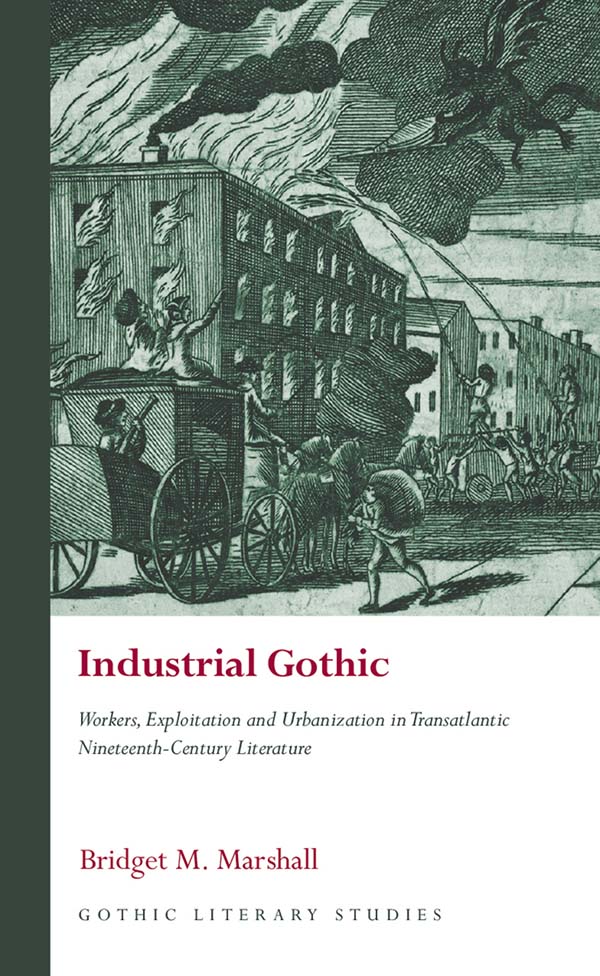Industrial Gothic
Workers, Exploitation and Urbanization in Transatlantic Nineteenth-Century Literature
Awdur(on) Bridget M. Marshall
Iaith: Saesneg
Dosbarthiad(au): Literary Criticism
Cyfres: Gothic Literary Studies
- Mehefin 2021 · 288 tudalen ·216x138mm
- · Clawr Caled - 9781786837707
- · eLyfr - pdf - 9781786837714
- · eLyfr - epub - 9781786837721
Mae’r astudiaeth hon yn ffurfio maes astudio newydd, y ‘Gothig diwydiannol’, sy’n gosod llenyddiaeth y Chwyldro Diwydiannol mewn trafodaeth gyda’r Gothig. Mae’n archwilio is-set sylweddol o lenyddiaeth drawsiwerydd y bedwaredd ganrif ar bymtheg sy’n defnyddio troellau, themâu a rhethreg y Gothig i ddarlunio erchyllterau gwirioneddol bywyd yn y ffatri, gan fframio’r Chwyldro Diwydiannol fel lleoliad gormodedd ac arswyd Gothig. Gan ddefnyddio deunyddiau archifol o’r bedwaredd ganrif ar bymtheg, caiff achosion lleol o ddiwydiannu Gothig (mewn dinasoedd penodol fel Lowell a Manceinion) eu hystyried ochr yn ochr â chysylltiadau a chymariaethau trawsgenedlaethol. Dadleua’r gyfrol fod straeon am erchyllterau gwirioneddol bywyd y ffatri yn aml yn defnyddio dull y Gothig, tra bo ysgrifennu Gothig yn y bedwaredd ganrif ar bymtheg (straeon, nofelau, cerddi ac addasiadau llwyfan) yn dechrau defnyddio lleoliadau newydd - ffatrïoedd, melinau a dinasoedd diwydiannol - fel cefnlenni ar gyfer yr erchyllterau a fyddai ar un adeg yn digwydd mewn cestyll Gothig.
List of Illustrations
Acknowledgements
Introduction: Weaving a Transatlantic Gothic Industrial History
Chapter 1: The Industrial Gothic Novel
Chapter 2: Industrializing the Gothic Victim/Heroine: Mill Girls and Factory Girls
Chapter 3: The Carceral Gothic and the Cotton Industrial Complex
Chapter 4: Old and New Industrial Horrors: Monsters and Disabled Bodies
Chapter 5: The Industrial Environment: EcoGothic Horrors
Epilogue: Unravelling the Industrial Gothic


